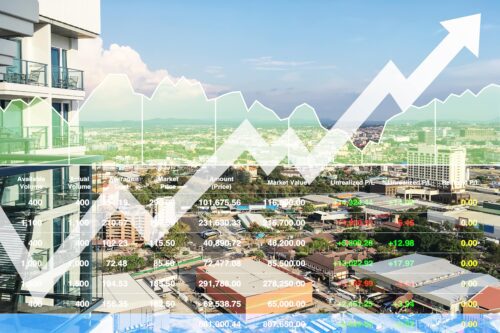The Australian dream is changing. The most recent census data, combined with research from the University of NSW, shows that more and more Australians are opting for apartment homes. Strata living is starting to trump the traditional ideal of a detached home on a suburban quarter-acre block.
Strata has a lot to offer residents. Community living often affords better facilities such as swimming pools, gyms, and event rooms for marking special occasions. Strata properties tend to put people closer to the heart of cities and all they have to offer. That, combined with the rising cost of property and property maintenance are some of the leading factors driving the increasing number of people choosing apartments over detached homes.
From Census figures to research carried out by the University of NSW, we explore the changing face of strata across Australian cities and the reasons behind the shift.

Who is choosing strata and apartment living?
In 2016, just 10% of Australians lived in apartments. Fast forward six years and that figure has grown to more than 13% of the population or 1,117,377 households. There is a clear trend toward strata living across the nation.
NSW leads the way with strata occupancy. There, 83,998 schemes with a combined total of 961,544 lots (apartments) are home to 15% of NSW’s population. The majority of these residents are single people (31%) followed by child-free couples, small families, groups and single-parent families.
Victoria has more strata schemes, but fewer lots – 115,968 and 907,135 respectively. 11% of Victorian households live in apartments and, as with NSW, most of these households are single people, followed by couples, families, groups and single-parent families.
Queensland takes third place with the number of strata lots. 7% of Queensland’s population live in apartments. There are 49,850 strata schemes and 498,402 apartments across them.
Although Western Australia has more apartments than Queensland, there are fewer strata schemes in the state. A larger number of single people (40%) than in other states occupy those homes. There are 51,798 strata schemes with 251,425 lots. 40% of them are occupied by single people.
South Australia, the ACT, Tasmania and Northern Territory have a total of 41,882 strata schemes between them, with South Australia holding the majority of these (22,515). In each of these states, single-occupant homes make up the majority of households in apartments. Aside from the Northern Territory where just 28% of single occupants make up the apartment households.
Of all the strata occupants, more than half were born overseas and half are between the ages of 20 and 39. After English, Mandarin is the most common language spoken at home, followed by Cantonese, Korean, Punjabi, Hindi and Nepali.

The benefits of strata homes
Multi-occupancy buildings and strata are more than just homes for people. They are also places of work, areas to connect and relax.
Nearly 10,000 people are directly employed by strata. This includes roles such as strata managers, front desk receptionists and facilities managers and caretakers.
The nature of strata schemes also creates other employment opportunities for other people – gardeners, tradespeople and dog groomers are just some of the professions servicing residential developments. Lawyers, valuers and engineers also provide services to strata complexes. Combined, these trades and professions represent 24% of the market in Australia.

The value of strata in Australia
Based on data from Australian strata insurers, the total property value of strata in 2020 was more than $1 trillion ($1,117,350,632,387). This is an increase of more than one hundred billion dollars from 2018 estimates.
When broken down, state by state, the top three states in terms of strata property value are NSW with over $400 billion worth of strata real estate, Victoria with over $300 billion worth and Queensland with more than $200 billion of strata value.
The increased convenience, security and access to better facilities are certainly part of the growing trend of apartment living. Having a home that is taken care of by capable and friendly managers is an attractive idea. When apartment living also offers the chance to become a valuable part of a vibrant and healthy community, it’s easy to see why strata is starting to give the traditional Australian dream of suburbia a run for its money.
